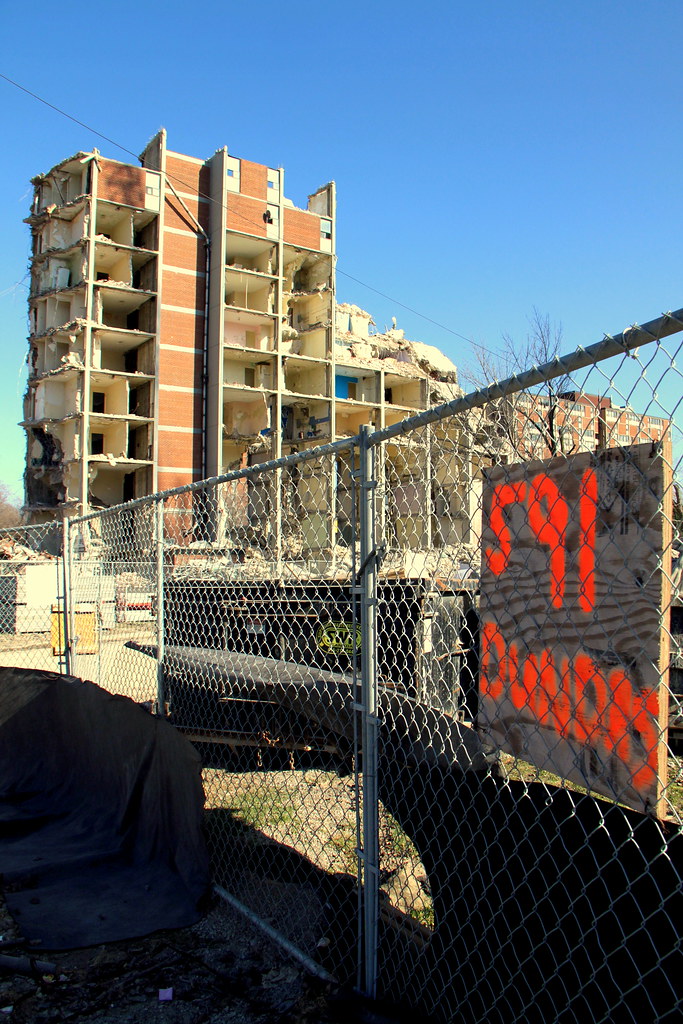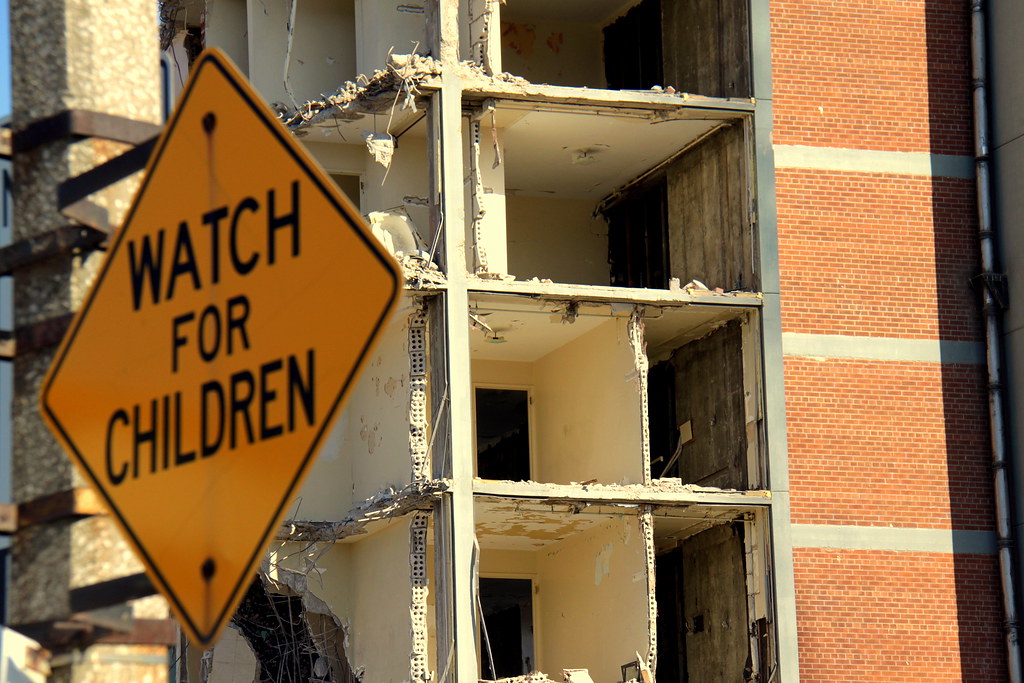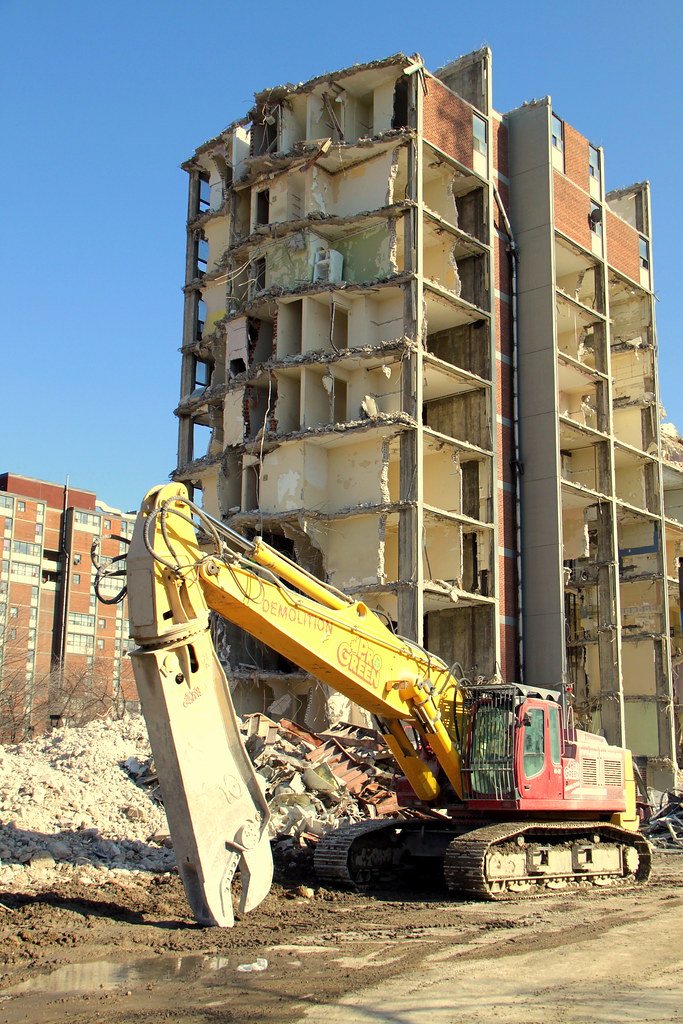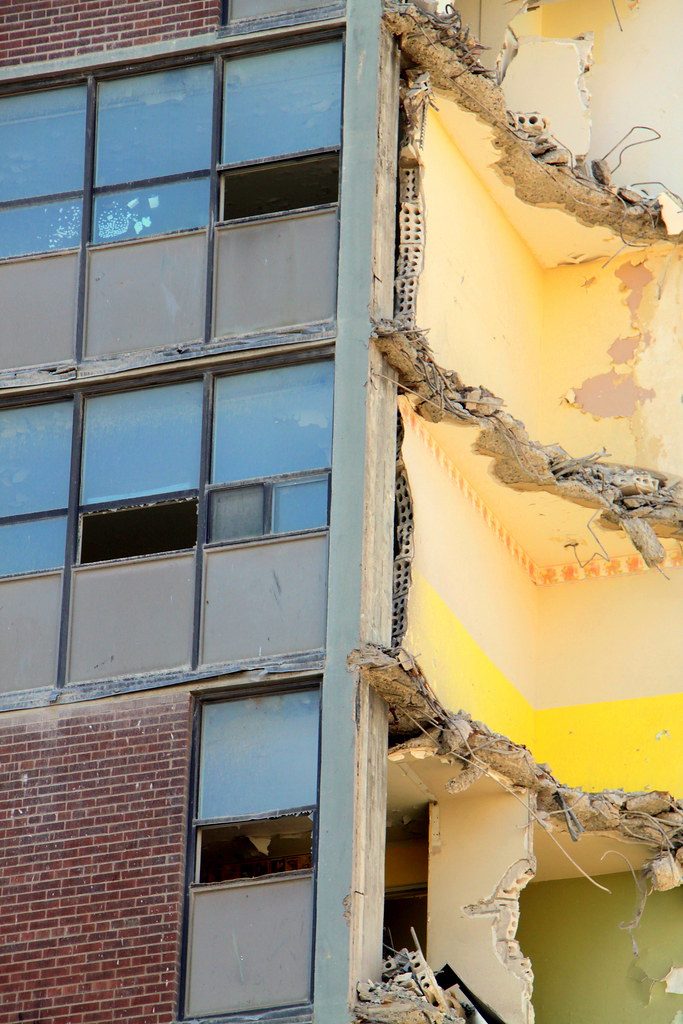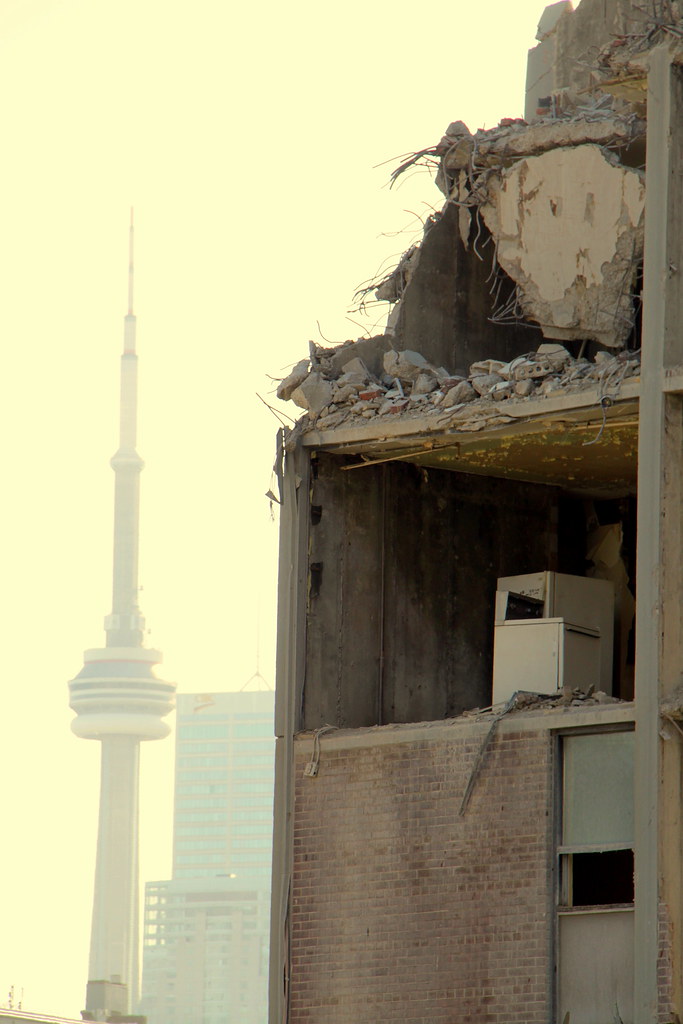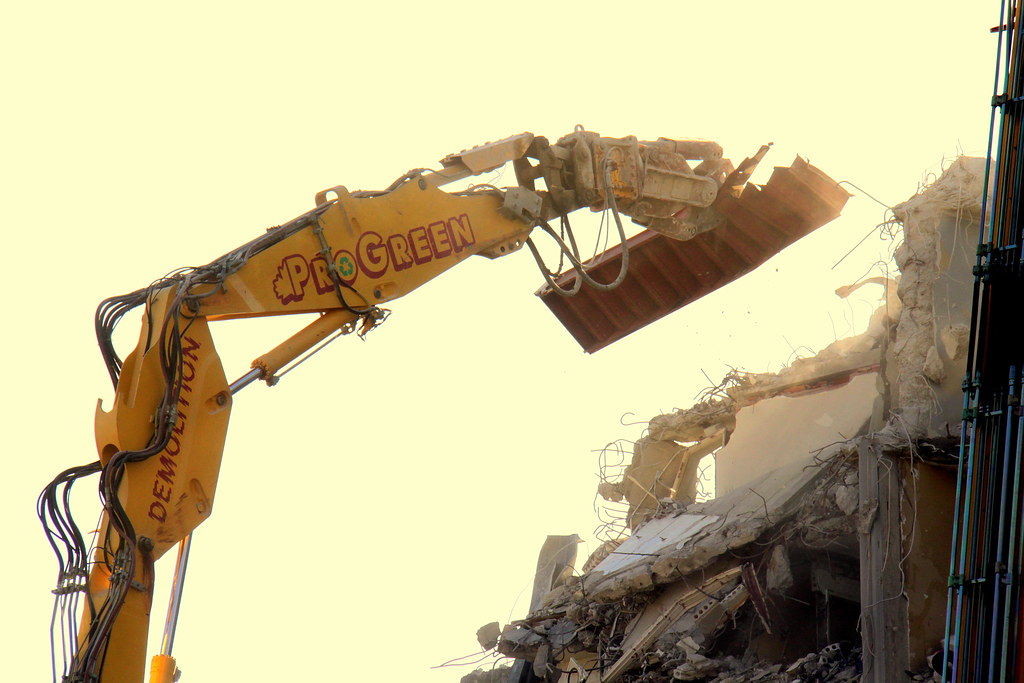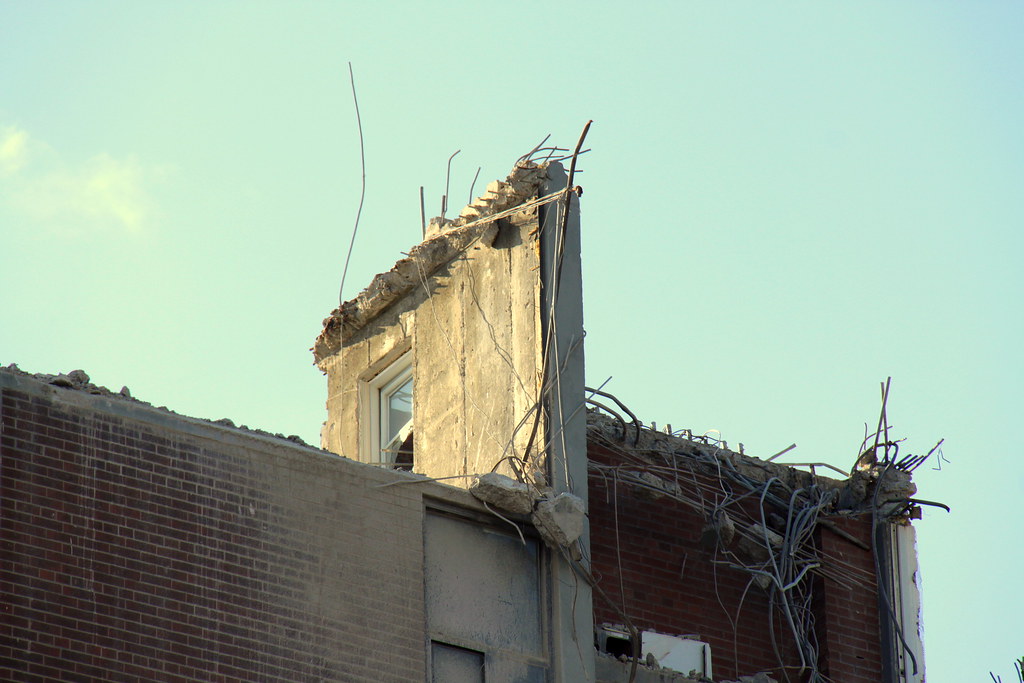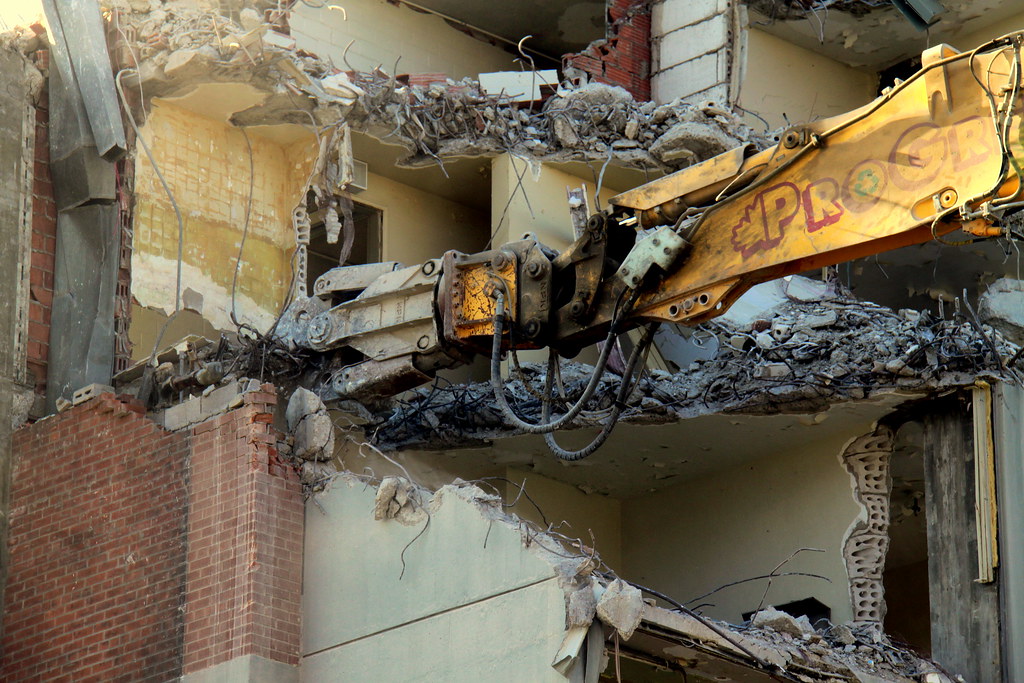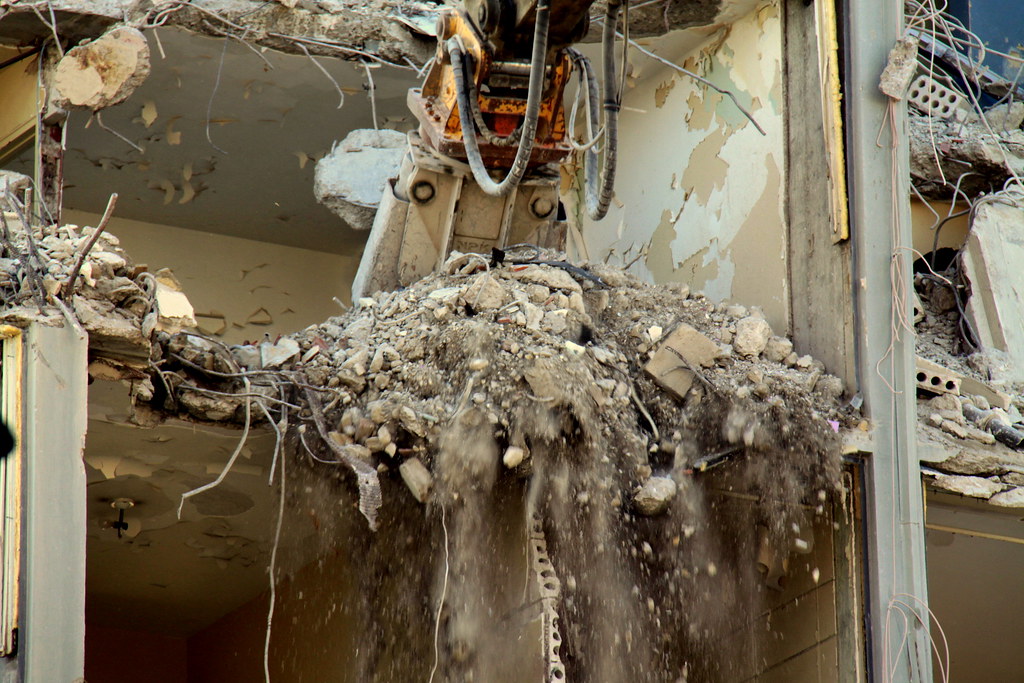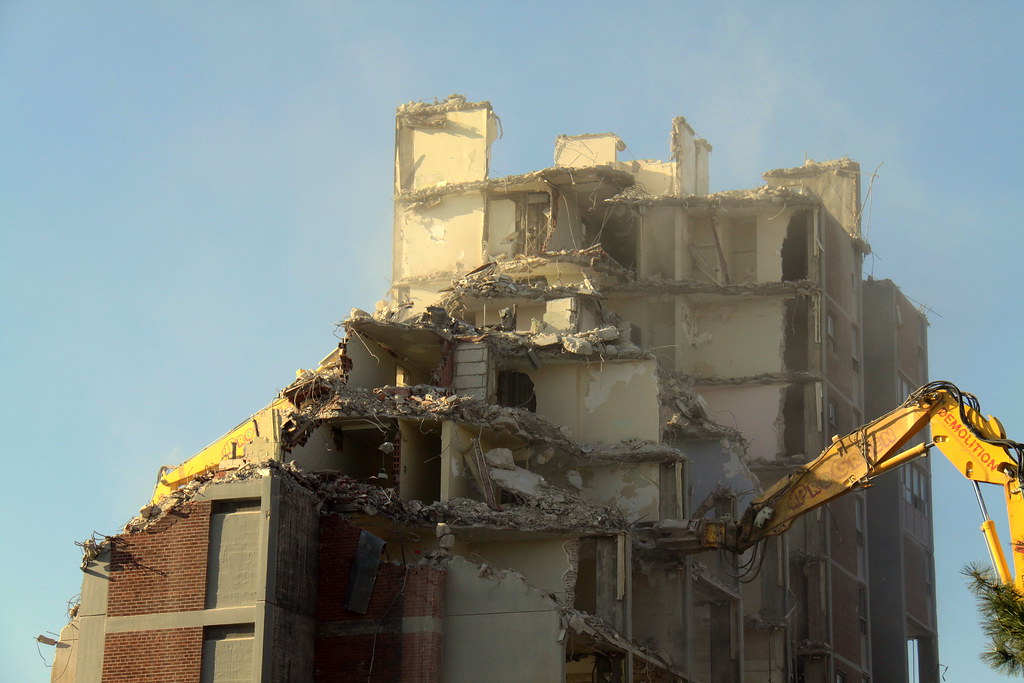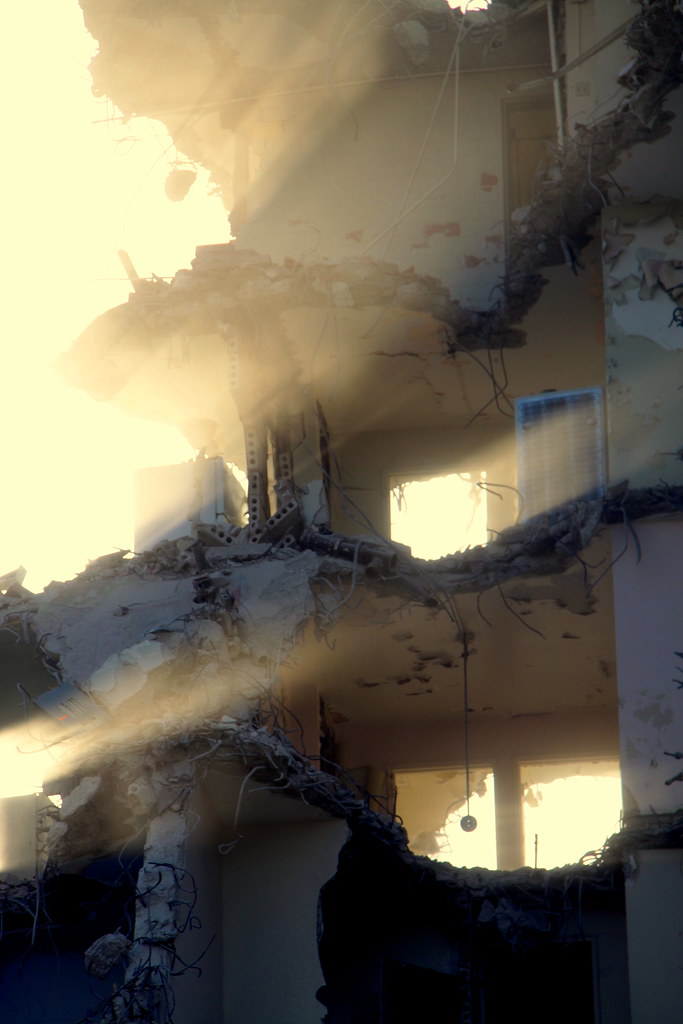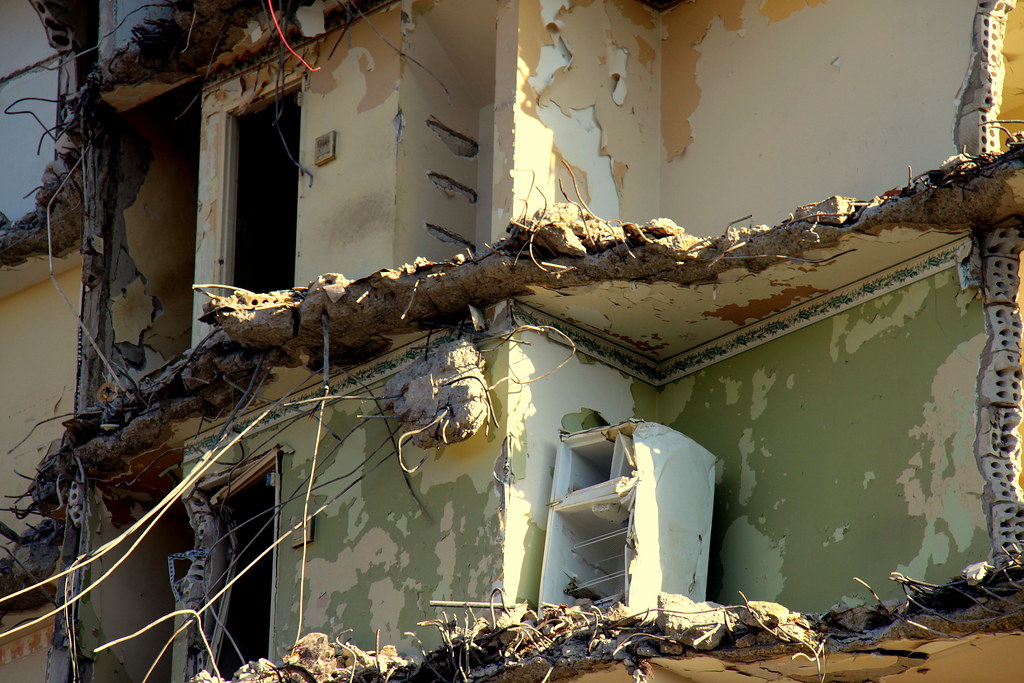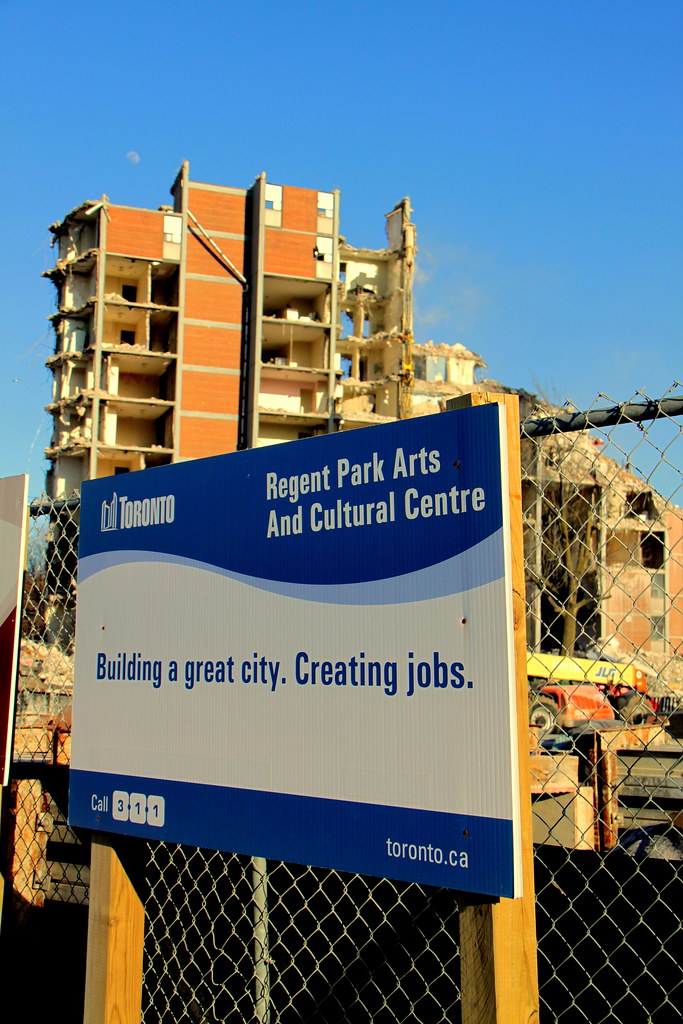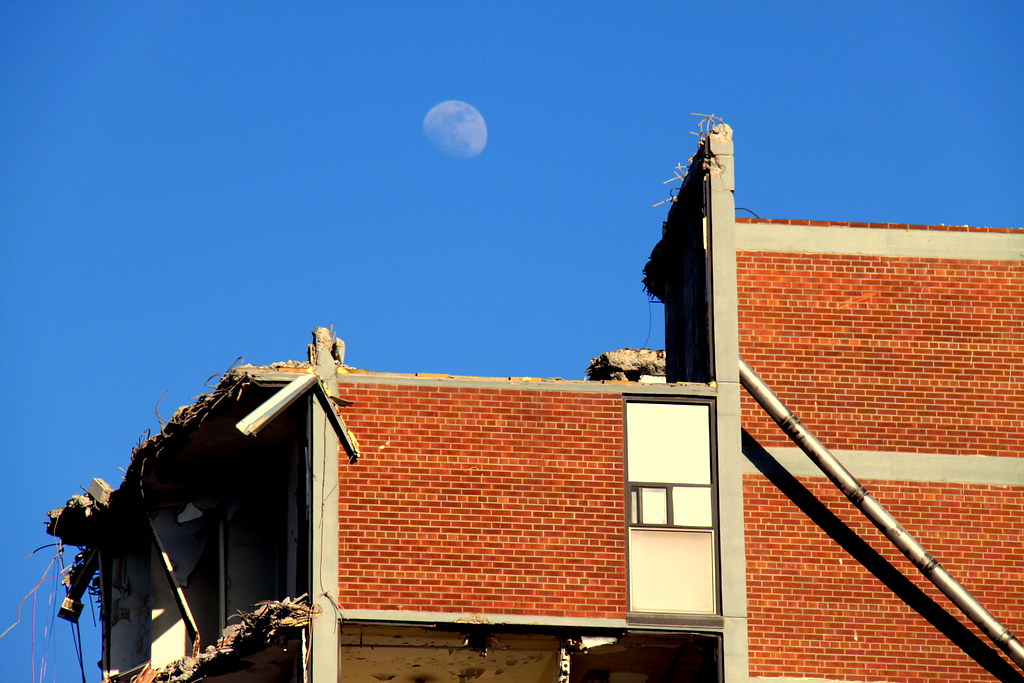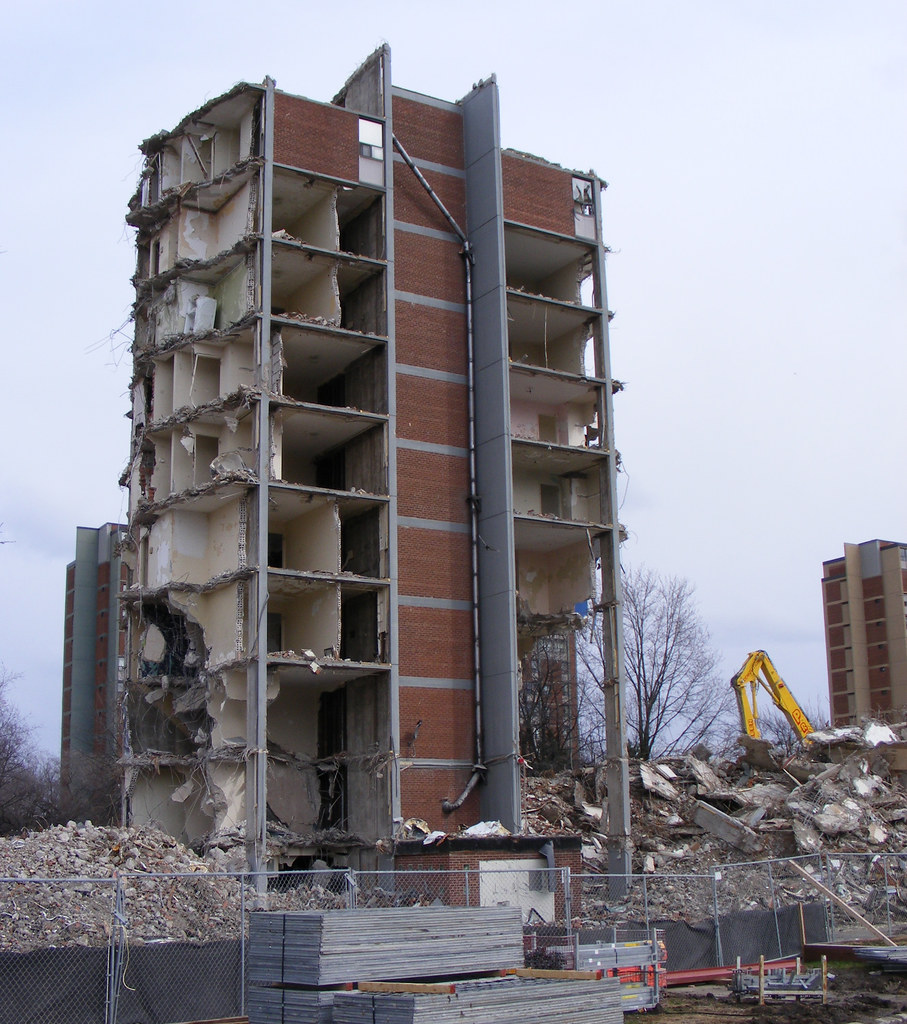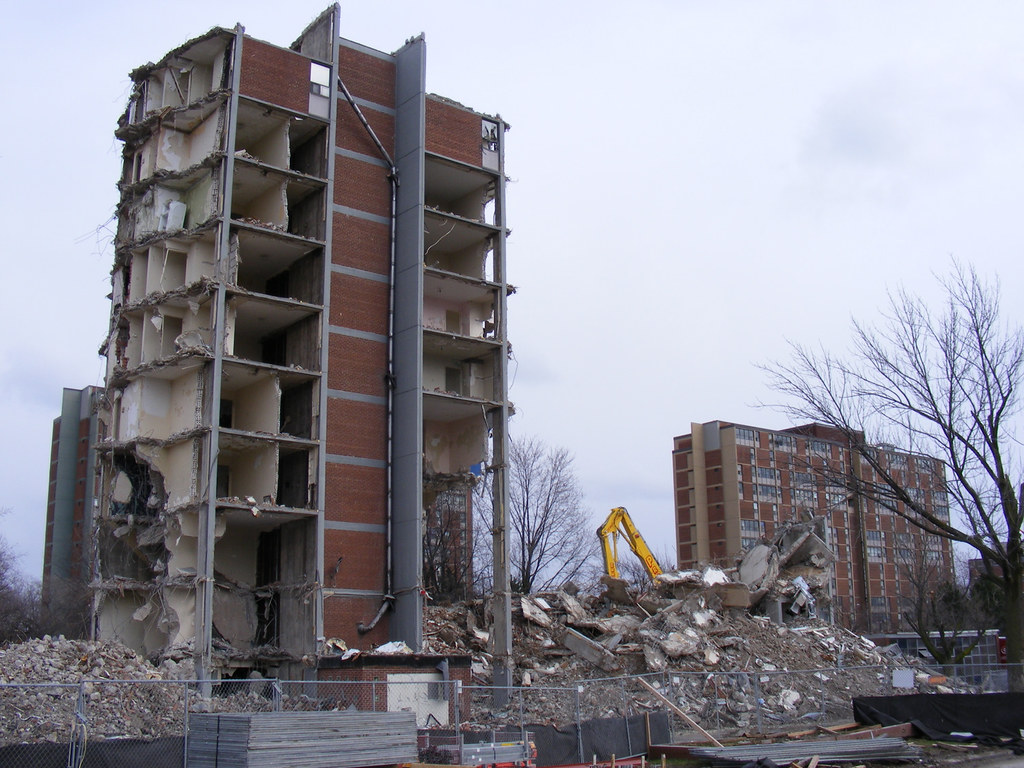Regent Park Rising: How complete revitalization intends to return vibrancy and reconnect the community after over half a century of isolation.
Text and photos by Dumitru Onceanu
This past Sunday, the organizers at
Janes Walk and
TEDxToronto provided an engaging day of observation and discussion about the Regent Park Revitalization. Participants in both events included representatives from Daniels and TCHC, community residents, and inspiring speakers.
Finishing touches are currently being put to phase 1, and construction of phase 2 is well under way. Here is a sense of what has already arrived, what is on the way, and some interesting facts in between.
Built form:
New TCHC rental buildings as well as market condos have been built, including both rental and market townhouses. Can you tell which of the three sets of townhouses are rental, and which are owned?
The design objective was for rental and owned property to be indistinguishable.
While market units were designed with 1, 2 and 3 bedrooms, many of the rental units are designed with up to 4 or 5 bedrooms to accommodate large families. Presently, not all of the townhouses are occupied and many are still being finished. Here are some images of the laneway and back side of the townhouses.
Employment:
New employment has arrived in both temporary and permanent form. Approximately 350 jobs have been created in association with phase 1. Some jobs were construction, sub-contraction and engineering related. Others are directly associated with the new retail which now includes Tim Hortons, Royal Bank, Rogers Store, and Fresh Co. Over 80% of the employees at Tim Hortons are residents of the community, and Tim Hortons has continued to hire more local residents at nearby stores as well. These are some of the first retail establishments to have a presence in the neighborhood in over 50 years.

One of the new condo residents pointed out an interesting fact about the Fresh Co supermarket. Although Fresh Co is known to be a more affordable choice for groceries, they have also been stocking items geared towards the higher income residents as well. This mix of selection is seen as an example of how the community is beginning to reflect a larger mix of residents from different socio-economic realities.
New park and aquatic centre:
Immediately to the east of phase 1 will soon be a new 4.3 acre park. It has yet to be officially named and is currently referred too as ‘Big Park’. Its unique features are what captures ones attention. Apart from the large open space, it will be surrounded by a new off-leash dog area, and a sizable community farm to complement many of the existing share plots in the immediate area. Many residents of Regent Park are new immigrants from countries where agriculture is an important way of life. Some have brought practical agricultural skills with them, which then intend to put to use in the community farm. This farm will be approximately located on the right side of the following image.

The aquatic centre was also designed with cultural sensitivity in mind. Many residents come from Muslim countries where it is generally unacceptable for women to participate in athletic activities in the presence of men. Women of the community were instrumental in getting the city to offer women’s only swim times, and to add a specific design to the facility to maintain their desired level of privacy. This design includes a large movable curtain system which will allow the pool to be screened off from public eyes, providing completely private use.
This example was highlighted to demonstrate the involvement of the community, and the degree to which their input was taken into consideration during the design phase. It was also mentioned that many residents who have taken a walk through the completed phase 1 were able to point out specific features that they themselves suggested and were actually implemented.
Arts Centre:
The new facility provides performing arts spaces as well as operating space for arts groups in the community. Some of these groups include:
-ArtHeart
-Regent Park School of Music
-Cabbagetown/Regent Park Museum
-Regent Park Film Festival
-COBA: Collective of Black Artists
-Native Earth Performing Arts
-Centre for Social Innovation
These groups will be housed on the second and third floor of the facility, and can be seen in the following images:
Diamond + Schmitt Architects
Diamond + Schmitt Architects
Diamond + Schmitt Architects
The main performing arts space is unique in that it can be divided into three separate spaces, complete with partition walls and movable seats, allowing for three simultaneous uses as well.
Diamond + Schmitt Architects
Diamond + Schmitt Architects
The main sign above the entrance will be an electronic ‘ticker tape’ pixel board. In the rendering, the coloured ‘stripes’ between floors were chosen to represent the flag colours of all the nations of the world, reflecting the international flavour of the community.
Diamond + Schmitt Architects
Preservation of the Dickinson building:
While nearly all of the Dickinson towers will be demolished to make way for new streets and buildings, one of the towers is being preserved as a testament to the award winning modernist architecture and design philosophy of the time. An interesting fact about the layout of the units in these buildings: Each is actually a two storey unit. In some units, you enter into the kitchen/living area, and then walk upstairs to the bedroom areas. In other units, you enter into the bedroom areas, and then walk upstairs to the kitchen/living space. Units also have both an east and a west view, making this a uniquely designed space. Local residents are not certain how they will proceed to revitalize the building, and thought has been given to the idea of repurposing the space for non-residential uses as well. The discussion is still very early in the process, and no final decisions have yet been made.

Demolition and construction is ongoing, and the community is reinventing itself at a rapid pace. While all of the temporarily displaced residents have the right to return into a newly completed unit, it was noted that about 25% of those residents chose not to return to phase 1, and decided to remain in the area to which they had been relocated. While it’s not entirely clear if some decided not to return because of the neighborhood, or simply because of the inconvenience of a second move, those who have returned expressed their hope that this revitalization will make for a more vibrant community to call home. Half a century ago, a giant urban experiment was unleashed on this neighborhood producing disastrous results. The second time around, we are again starting with a blank slate, and a set of urban design principles to work with. The community hopes that this time, we get it right!
